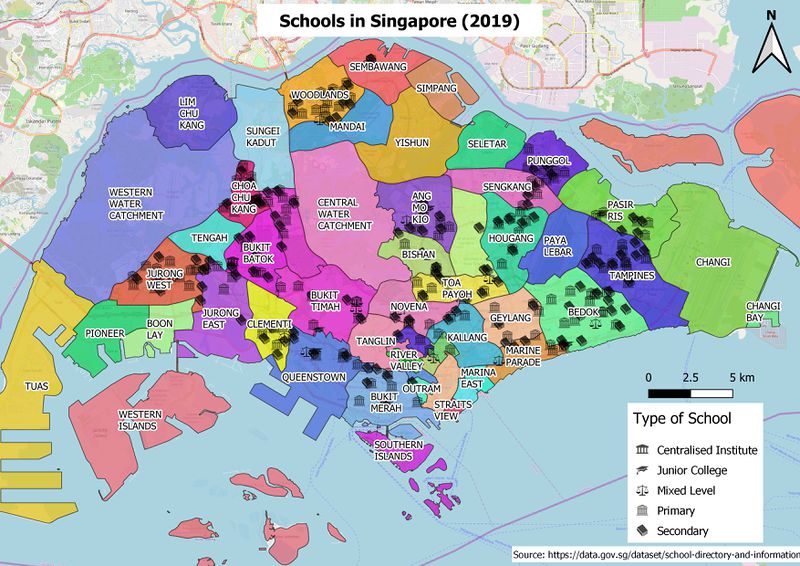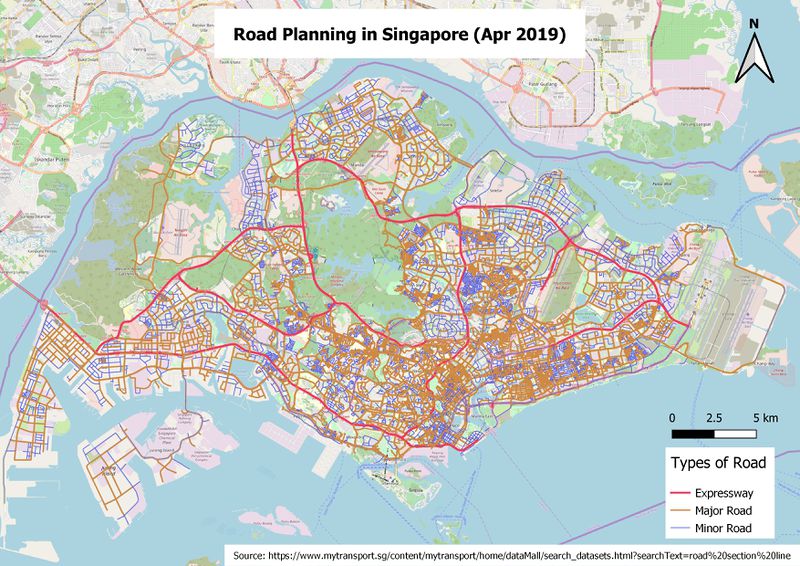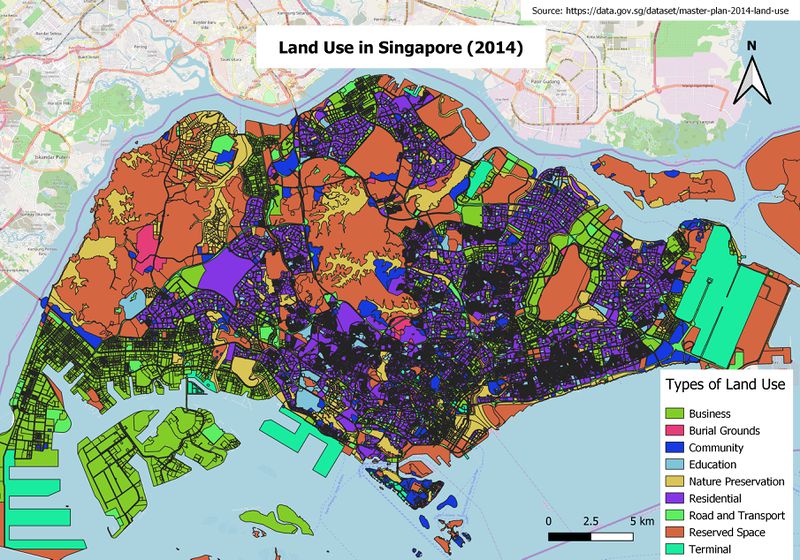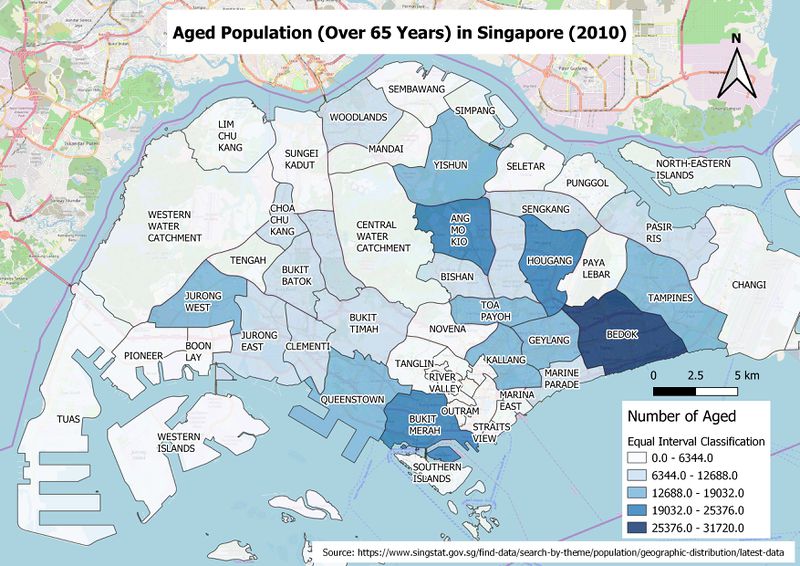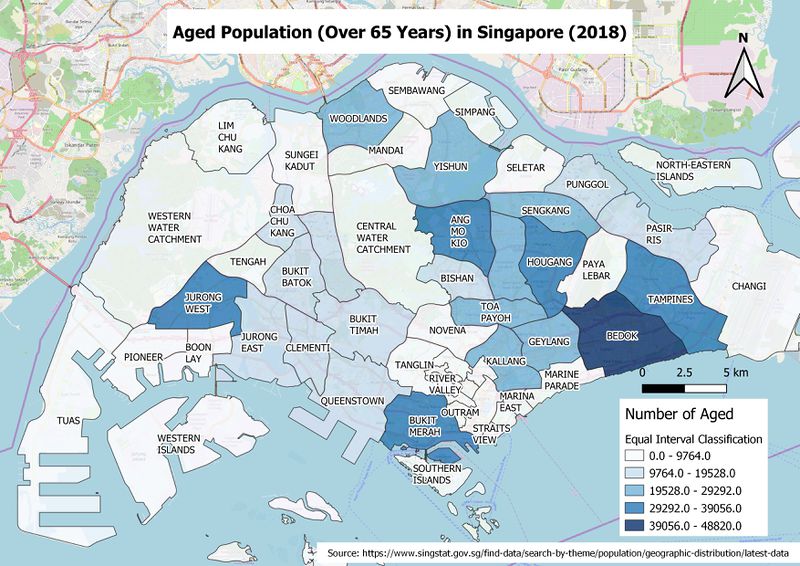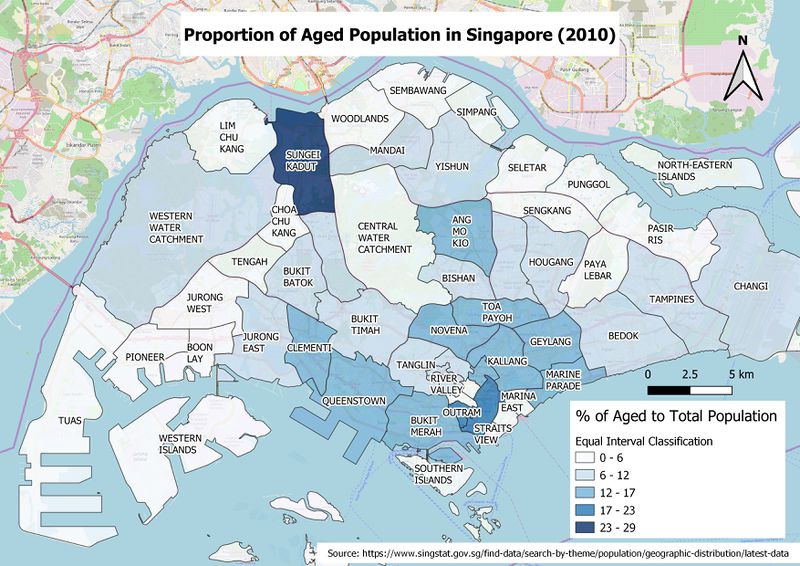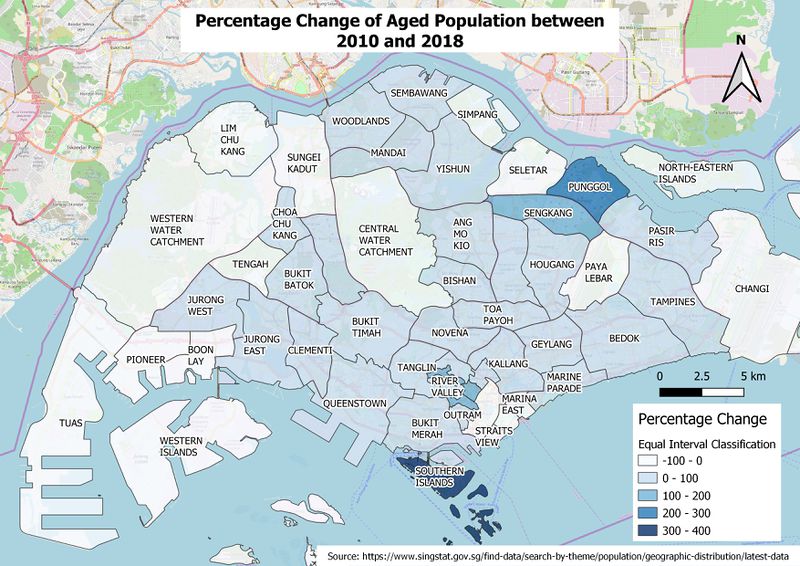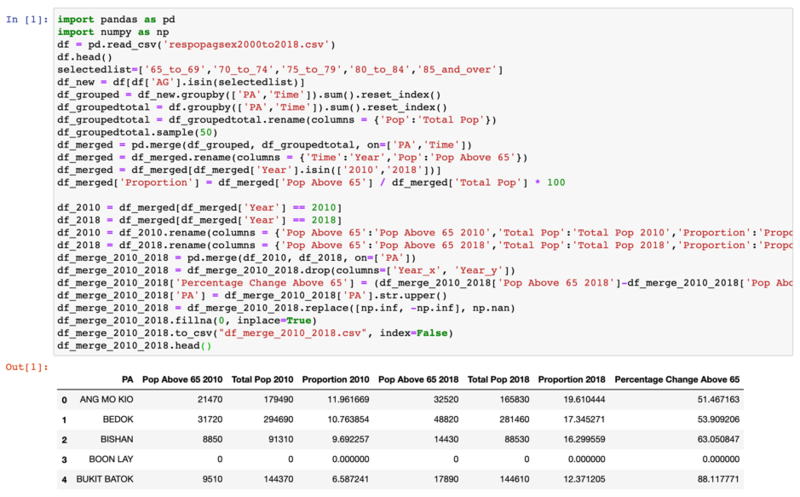SMT201 AY2018-19T1 EX1 Goh Jia Sheng
Contents
- 1 Q1a. Using school information from data.gov.sg, prepare a thematic map showing the distribution of public education institution by school types such as primary, secondary, etc.
- 2 Q1b. Using road GIS data of LTA, prepare a thematic map showing the hierarchy of road network system of Singapore such as expressway, major road, minor road, etc.
- 3 Q1C. Using master plan landuse GIS data from data.gov.sg, prepare a thematic map showing 2014 Master Plan Landuse.
- 4 Q2a. Aged population (+65) in 2010 and 2018
- 5 Q2b. Proportional of aged population in 2010 and 2018
- 6 Q2c. Percentage change of aged population between 2010 and 2018
- 7 Explain the reasoning behind your classification choices, how you derived the new variables and handled missing values, and any other relevant judgments and assumptions. Please limit this discussion to a maximum of not more than 500 words.
Q1a. Using school information from data.gov.sg, prepare a thematic map showing the distribution of public education institution by school types such as primary, secondary, etc.
The distribution of schools across Singapore are categorised into the different types of schools and shown using pictorial symbols. It gives a clear picture of the number of schools in each town. From the map, we can see that the primary and secondary schools are generally distributed evenly across these towns. However, the upper education schools are lacking in the west side and concentrated in the south side of Singapore. It is possible to expect more upper education schools to be built in the west side with the development of Tengah area in the near future
Q1b. Using road GIS data of LTA, prepare a thematic map showing the hierarchy of road network system of Singapore such as expressway, major road, minor road, etc.
The roads are categorised into different types of road and shown using line symbols. From the map, we can see that the roads are well connected across Singapore. We can also see a pattern whereby minor roads are surrounded by major road due to the needs to access certain parts of the area.
Q1C. Using master plan landuse GIS data from data.gov.sg, prepare a thematic map showing 2014 Master Plan Landuse.
The types of land use has been aggregated into more general categories to give a macro view of the land use in Singapore. From the map, we can see high usage of residential space due to the high population density. Businesses mainly resides in the west side, with a large segment in the Jurong Islands.
Q2a. Aged population (+65) in 2010 and 2018
From both of the maps above, we can see that the distribution of Aged population is generally similar. Bedok is still the area with the most Aged population throughout the years. However, I feel that utilising solely the Aged Population count is misleading and utilising the proportion in Qn. 2b would be a better visualisation to depict the Aged population in Singapore.
Q2b. Proportional of aged population in 2010 and 2018
When depicting the proportion of Aged to Total Population for 2010 and 2018, we can clearly see that areas like Ang Mo Kio, Queenstown and Kallang have higher proportion of Aged Population over the years.
Q2c. Percentage change of aged population between 2010 and 2018
The above map shows an increase in aged population growth in non-mature estates in Punggol and Sengkang. This might be due to increase in development of 2 Room Flexi flats in the area in the recent years which mainly targets the aged population to downgrade to smaller flats. Surprisingly, Sentosa (Southern Islands) shows an increase in aged population growth, at an area with mostly premium private estates. Generally, Singapore is ageing at a faster pace in 2018 as compared to 2010.
Explain the reasoning behind your classification choices, how you derived the new variables and handled missing values, and any other relevant judgments and assumptions. Please limit this discussion to a maximum of not more than 500 words.
With the raw dataset from singstat.gov.sg, I conducted data cleaning and aggregation using python. (I tried using QGIS but it is too slow) Firstly, null values are replaced with 0 and each population count is grouped by its town and year. ‘PA’ field was converted to uppercase to match the data in QGIS. The years are then filtered out to retrieve year 2010 and 2018. Proportion was calculated for Qn. 2b and percentage change was calculated for Qn. 2c. The data was then exported to a csv file to be used by QGIS. After importing the csv file, the data is joined with Singapore’s Planning Zone 2014 Map via the relation field: ‘PA’ and ‘FIELD_N’. As Planning Zone is used instead of Subzone, electoral boundary lines does not affect our visual analysis. These data are then classified using equal interval classification and created into the maps as shown above.
